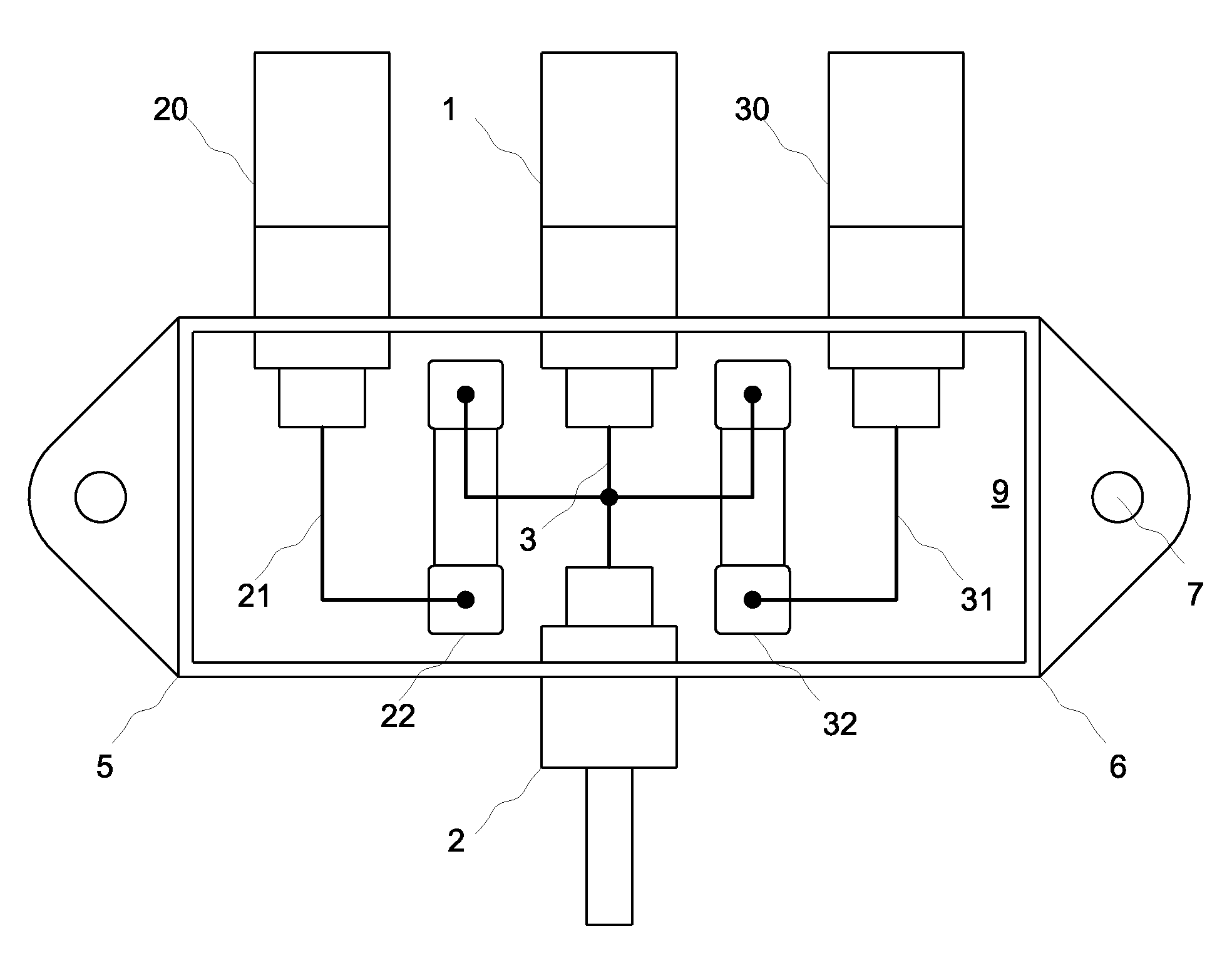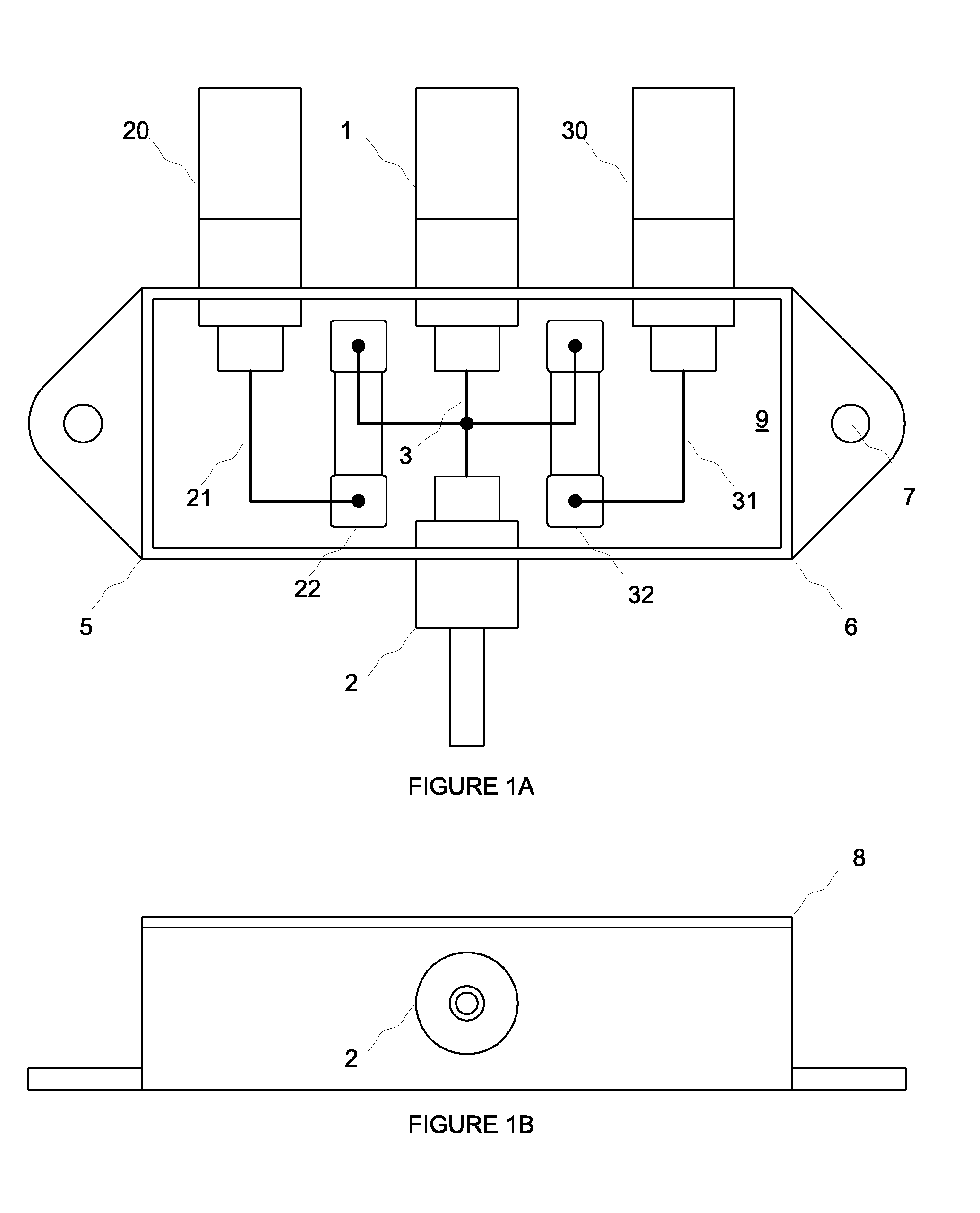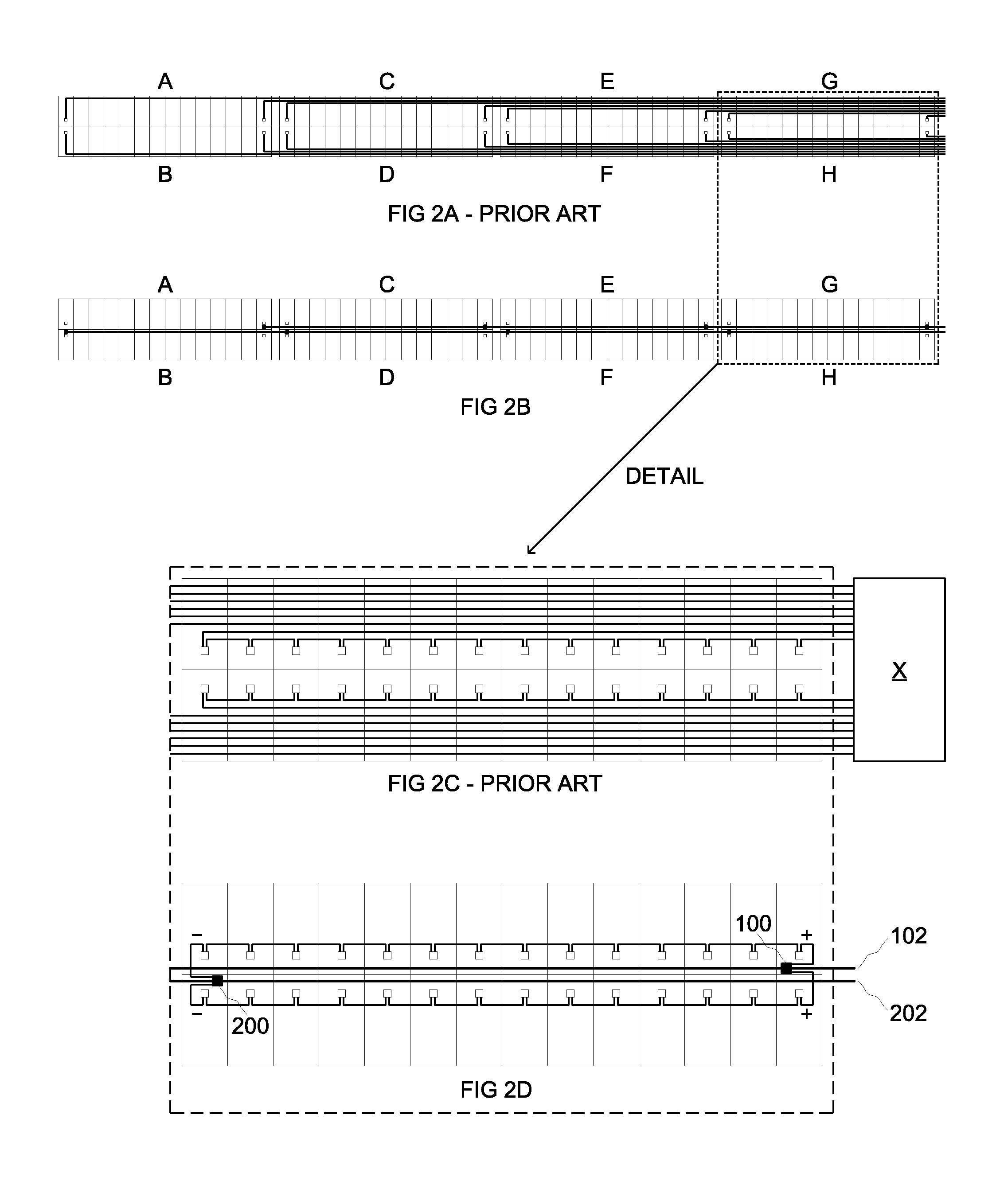Photovoltaic string sub-combiner
a photovoltaic and sub-combiner technology, applied in the direction of gaseous cathodes, electrical apparatus casings/cabinets/drawers, coupling device connections, etc., can solve the problem of significant cost of providing overcurrent protection for every series string, reduce material cost, reduce labor costs and normalized i2r loss, and reduce the number of field wiring connections
- Summary
- Abstract
- Description
- Claims
- Application Information
AI Technical Summary
Benefits of technology
Problems solved by technology
Method used
Image
Examples
Embodiment Construction
[0019]FIG. 1 shows a preferred embodiment of the invention as a sub-combiner for combining positive conductors from two series strings as well as supplying positive buss input and output connectors.
[0020]FIG. 1A shows a top view of the sub-combiner. Connectors 1, 20, 30 are standard male MC4 conductors, the type that mate with the positive connector on a standard PV module. Connector 2 is a standard female MC4 conductor, the type that mates with the negative connector on a standard PV module or, as in this case, the type that are used to extend the conductor length of a positive circuit. Electrical connections 21 and 31 are made from connectors 20 and 30 to one end of fuses 22 and 32, respectively. The remaining ends of fuses 22 and 32 are electrically connected in common with connectors 1 and 2 as shown by circuit 3. In practice, connectors 20 and 30 will each be connected to the positive pole of the last module in a unique series string. The sub-combiner is intended for use with o...
PUM
 Login to View More
Login to View More Abstract
Description
Claims
Application Information
 Login to View More
Login to View More - R&D
- Intellectual Property
- Life Sciences
- Materials
- Tech Scout
- Unparalleled Data Quality
- Higher Quality Content
- 60% Fewer Hallucinations
Browse by: Latest US Patents, China's latest patents, Technical Efficacy Thesaurus, Application Domain, Technology Topic, Popular Technical Reports.
© 2025 PatSnap. All rights reserved.Legal|Privacy policy|Modern Slavery Act Transparency Statement|Sitemap|About US| Contact US: help@patsnap.com



